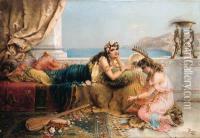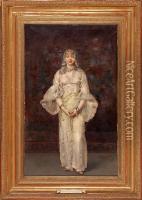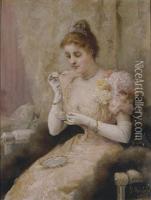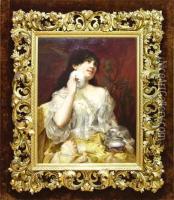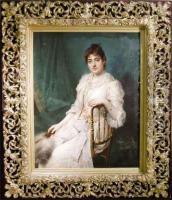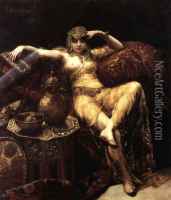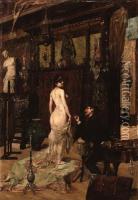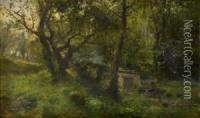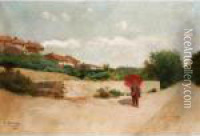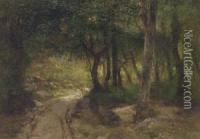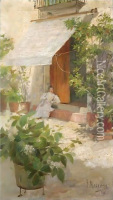Francisco Masriera y Manovens Paintings
Francisco Masriera y Manovens was a distinguished Spanish painter and jeweler born on February 21, 1842, in Barcelona, Spain. He hailed from a family deeply rooted in the arts, with his father and brother also being prominent figures in the world of art and jewelry design. Masriera's education in art began at an early age under the tutelage of his father, Josep Masriera i Vidal, and he later attended the Escola de la Llotja in Barcelona, where he honed his skills in painting and drawing.
Masriera's artistic journey continued as he traveled through Europe to further his studies and gain exposure to different artistic styles. He spent time in Rome, where he was influenced by the Italian Renaissance and the classical art that he encountered. His travels also took him to Paris, a hub of avant-garde movements, where he was exposed to the latest trends in art, including Impressionism.
Throughout his career, Masriera developed a distinctive style that blended academic classicism with elements of modernisme (the Catalan variant of Art Nouveau). He was known for his genre scenes, landscapes, and historical paintings, often imbued with a sense of romanticism. His works were characterized by their exquisite detail, vibrant colors, and the incorporation of Mediterranean light. One of his most famous works is 'The Consistory of the Gay Science,' which reflects his interest in medieval themes and showcases his skillful use of color and composition.
In addition to painting, Masriera was also deeply involved in the family jewelry business, Masriera y Carreras (later Masriera Hermanos), which was renowned for its Art Nouveau jewelry designs. He played a key role in introducing modernist aesthetics into the jewelry pieces the company produced, often incorporating motifs from nature and the use of new materials and techniques.
Francisco Masriera y Manovens passed away on December 31, 1902, in Barcelona. Today, he is remembered for his contributions to both the art and jewelry world, with his works being held in various museums and private collections. His legacy continues to be celebrated for its embodiment of the cultural and artistic vitality of late 19th-century Spain.
